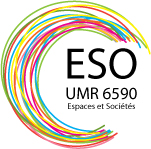Landscape changes in the Marine Conservation Unit Araí-Peroba: a temporal perspective from 1990 to 2022
As mudanças na Paisagem da RESEX Marinha Araí-Peroba: uma perspectiva temporal de 1990 a 2022
Résumé
The conservation of coastal and marine areas is critical in addressing the challenges posed by climate change and unsustainable resource exploitation. In this context, Marine Conservation Units have emerged as a vital strategy for preserving biodiversity and sustaining the livelihoods of traditional communities. This study provides a comprehensive analysis and quantification of landscape changes within the Marine Conservation Unit Araí-Peroba, located in northeastern Pará, Brazil, from 1990 to 2022. Utilizing geospatial data from the MapBiomas Project and the Google Earth Engine platform, annual mapping of land use and land cover was conducted employing classification algorithms such as Random Forest and U-Net convolutional neural networks. The findings reveal significant transformations in forest formations, mangroves, wetlands, and pasturelands, reflecting both environmental pressures and human interventions. The analysis underscores the necessity for integrated management strategies that incorporate scientific knowledge alongside traditional ecological knowledge of local communities. The conclusions highlight the importance of robust public policies and the active participation of local communities in the sustainable conservation of the Marine Conservation Unit.
A conservação de áreas costeiras e marinhas é essencial devido aos desafios impostos pelas mudanças climáticas e à exploração insustentável dos recursos naturais. Neste contexto, as Reservas Extrativistas (RESEX) surgem como uma importante estratégia para proteger a biodiversidade e garantir os meios de vida das comunidades tradicionais. Este estudo analisa e quantifica as mudanças na paisagem da RESEX MarinhaAraí-Peroba, localizada no nordeste do Pará, Brasil, ao longo do período de 1990 a 2022. Utilizando dados de geoprocessamento do Projeto MapBiomas e a plataforma Google Earth Engine, foram mapeados anualmente o uso e cobertura do solo, aplicando algoritmos de classificação como random forest e redes neurais convolucionais U-Net. Os resultados mostram significativas transformações nas formações florestais, mangues, áreas alagáveis e de pastagem, refletindo tanto as pressões ambientais quanto as intervenções humanas. A análise evidencia a necessidade de estratégias de gestão integradas que considerem tanto o conhecimento científico quanto os saberes tradicionais das comunidades locais. As conclusões destacam a importância de políticas públicas robustas e a participação ativa das comunidades na conservação sustentável da RESEX.
| Origine | Fichiers éditeurs autorisés sur une archive ouverte |
|---|---|
| licence |






